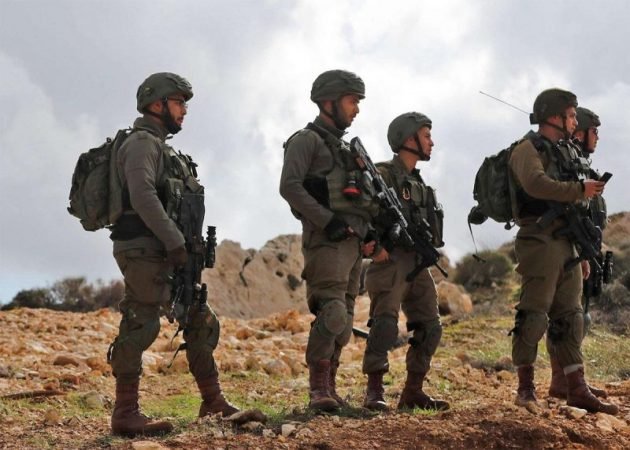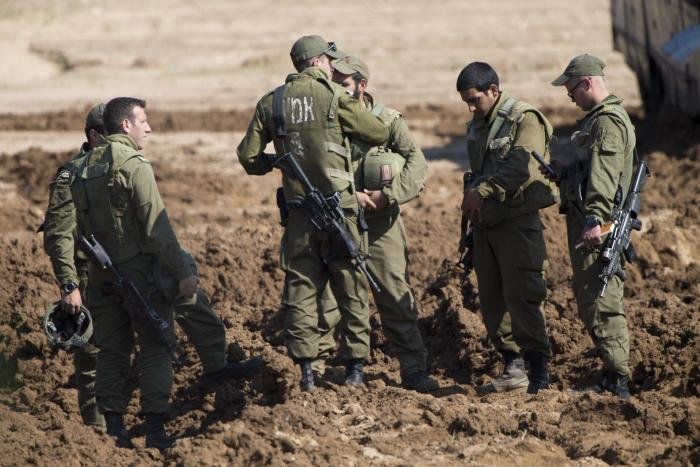The Revolution Within the IDF

EXECUTIVE SUMMARY: Brig.-Gen. (res.) Hasson Hasson’s recent depiction of the threats facing Israel is very disturbing, even if it contains no new revelations. The IDF is undergoing a revolution as it strives to be prepared to handle these threats.
In the February 26 edition of the Maariv supplement, Brig.-Gen. (res.) Hasson Hasson stated that the Iranians are already “at the gates.” This unsettling assessment leads to troubling conclusions. Israel could be surprised by a rocket/missile barrage that destroys vital strategic facilities. Its likely response to such an assault could incur further heavy barrages of all kinds, including simultaneous multi-arena fire of long-range, highly accurate rockets and missiles. Those rockets and missiles that are not intercepted or demolished at their launching points could destroy additional strategic facilities such as power stations, hospitals, and economic hubs in addition to vital military targets.
The IDF itself has contributed not a little to the emergence of this nightmare scenario. In the first place, it grossly underestimated enemy rocket/missile arsenals and the threat they implied, promising that those weapons would “rust in their storerooms.” And in the second place, under the influence of the Oslo “peace process” and the “end of history” atmosphere, it replaced its traditional doctrine of victory, which was based on rapid physical defeat of enemy forces, with a doctrine of “psychological victory,” which does not entail enemies’ physical defeat.
This peculiar shift brought Israel into long wars of attrition in 2006 and in 2014 in which the enemy did not conform to Israel’s expectations and was not deterred. The wars, which were devoid of significant military achievements, did not end in significant agreements. The result: Lebanon and the Gaza Strip have become forward extensions of Iran and the Muslim Brotherhood. They are swords whetted on Israel’s neck.
A point of light in this gloomy picture was provided by a recent report on the IDF website stating that for the first time in its history, the IDF has inaugurated a War College. It can be inferred from the report that this is not an upgrade of the Command and Staff College but a revolution in the training of senior officers that is part of the overall revolution the IDF is now undergoing—a revolution that aims to restore Israel’s control of the duration of the war and the costs of winning it.

This revolution is complex and includes, as Chief of Staff Kochavi’s statements over the past year have indicated, several smaller revolutions:
- A revolution in military doctrine, which is now focused once again on winning—not by immobilizing the enemy’s war-fighting capacity as in the past, but by systematic, precise, and complete (or almost complete) destruction of its resources and terrorists.
- A revolution in war strategy, from linear to simultaneous, regarding both the stages of the war and the manner of achieving victory in the combat arenas.
- An organizational revolution in the force structure and the means of deploying it: no more hierarchical deployment in inter-corps cooperation and inter-branch integration, but instead the merging of all elements of war-making. Rather than, as in the past, dividing them into a fighting echelon and an accessory combat echelon, the war-making effort will be unified, with blurred hierarchical boundaries and blurred boundaries between branches and corps.
- A revolution in the command method: no longer a decentralized, goal-oriented command but a hybrid-centralized goal-oriented command that is merged with a very tight centralistic command, in certain domains even with robotic management.
The War College appears designed, then, to allow the fulfillment of the IDF’s revolution by augmenting the traditional element of studying the art of war with additional aspects: digital literacy, informational literacy, and the ability to rapidly retrieve information from military databases that have been interconnected and merged, alongside basic familiarity with new “technological engines” that require commanders who can make optimal use of those engines’ advantages.

The challenges of the revolution—the importance of completing it as rapidly as possible being difficult to exaggerate—are three: limitations of budget and time; civic challenges and social changes that keep the elite of the country’s young people away from the IDF and from the reserve army, which is as critically needed today as it was in the past; and the “elephant” in the offices of the Chief of Staff and the political echelon: the Court at the Hague.
This article was originally published by BESA Center


















